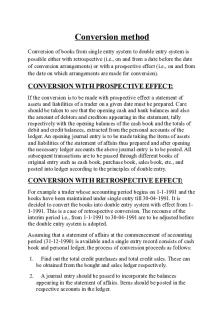Plurality Method PDF

| Title | Plurality Method |
|---|---|
| Course | Explorations In Modern Mathematics |
| Institution | Kent State University |
| Pages | 2 |
| File Size | 52.3 KB |
| File Type | |
| Total Downloads | 1 |
| Total Views | 161 |
Summary
Explanation and Practice Examples about Plurality Method. ...
Description
MATH 11008:
Plurality Method Section 1.2
The Plurality Method: With the Plurality Method all we care about is first-place votes. The candidate with the most first-place votes, the plurality candidate, wins the election.
◦ With the Plurality Method, we do not need the entire preference ballot since only the first choice matters. ◦ When there are three or more candidates, plurality differs from majority. Plurality is the greatest number of votes. Majority means more than half of the votes. (A candidate that receives a majority of first-place votes is called the majority candidate.) However, for two candidates, the plurality of votes is the majority of votes.
Example 1: The Math Appreciation Society (MAS) is dedicated to the fostering of enjoyment and appreciation of mathematics among college students. During a recent meeting, they have four candidates running for president: Alisha (A), Boris (B), Carmen (C), and Dave (D). Each of the 37 members of the club votes by preference ballot indicating their choices. Below is the preference schedule for this election. Number of voters 1st choice 2nd choice 3rd choice 4th choice
14 A B C D
10 C B D A
Use the Plurality Method to determine the president.
8 D C B A
4 B D C A
1 C D B A
MATH 11008: PLURALITY METHOD SECTION 1.2
2
Example 2: A 13-member committee is selecting a chairperson. The 3 candidates are Albert (a), Barbara (b), and Charles (c). Each committee member completely ranked the candidates on a separate ballot. The preference schedule is listed below. Number of voters 4 2 4 3
Ranking a>b>c b>c>a b>a>c c>a>b
Use the Plurality Method to determine the chairperson.
Example 3: Consider an election with 1025 voters. (a) If there are 4 candidates, at least x votes are needed to have a plurality of the votes. find x.
(b) Suppose that at least 129 votes are needed to have a plurality of the votes. What is the number of candidates in the election?
(c) Suppose that at least 206 votes are needed to have a plurality of the votes. What is the number of candidates in the election?
• Fairness Criterion ◦ The Majority Criterion: If candidate X has a majority of the first-place votes, then candidate X should be the winner of the election. ∗ Note that the Plurality Method satisfies the Majority Criterion. ◦ The Condorcet Criterion: If candidate X is preferred by the voters over each of the other candidates in a head-to-head comparison, then candidate X should be the winner of the election. ∗ A candidate that can win all head-to-head matchups is called the Condorcet candidate. ∗ Note that Example 1 illustrates that the Plurality Method violates the Condorcet Criterion. • Be careful! When we say that a voting method violates a fairness criterion it only means that violations CAN happen, not that they must happen....
Similar Free PDFs

Plurality Method
- 2 Pages

Plurality With Elimination
- 3 Pages

Biscuit Method
- 2 Pages

IRAC Method
- 2 Pages

IRAC Method
- 2 Pages

Jefferson\'s Method
- 3 Pages

Bloomberg method
- 26 Pages

Management Method
- 10 Pages

Webster\'s Method
- 3 Pages

Secant Method
- 9 Pages

IRAC Method
- 2 Pages

Inventory method
- 13 Pages

Ordinary method
- 20 Pages

Method Validation
- 52 Pages

Conversion method
- 4 Pages

BTC method
- 1 Pages
Popular Institutions
- Tinajero National High School - Annex
- Politeknik Caltex Riau
- Yokohama City University
- SGT University
- University of Al-Qadisiyah
- Divine Word College of Vigan
- Techniek College Rotterdam
- Universidade de Santiago
- Universiti Teknologi MARA Cawangan Johor Kampus Pasir Gudang
- Poltekkes Kemenkes Yogyakarta
- Baguio City National High School
- Colegio san marcos
- preparatoria uno
- Centro de Bachillerato Tecnológico Industrial y de Servicios No. 107
- Dalian Maritime University
- Quang Trung Secondary School
- Colegio Tecnológico en Informática
- Corporación Regional de Educación Superior
- Grupo CEDVA
- Dar Al Uloom University
- Centro de Estudios Preuniversitarios de la Universidad Nacional de Ingeniería
- 上智大学
- Aakash International School, Nuna Majara
- San Felipe Neri Catholic School
- Kang Chiao International School - New Taipei City
- Misamis Occidental National High School
- Institución Educativa Escuela Normal Juan Ladrilleros
- Kolehiyo ng Pantukan
- Batanes State College
- Instituto Continental
- Sekolah Menengah Kejuruan Kesehatan Kaltara (Tarakan)
- Colegio de La Inmaculada Concepcion - Cebu